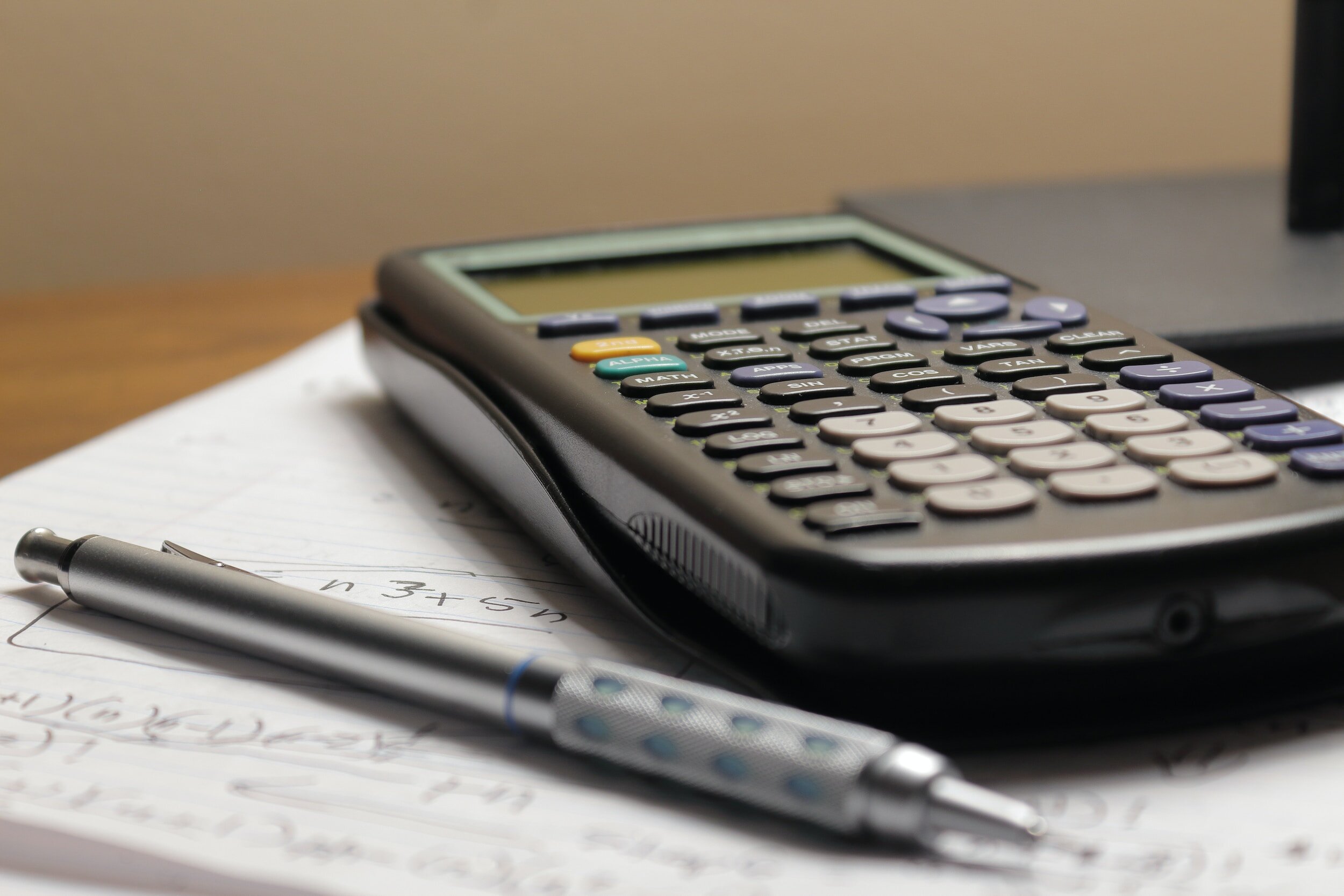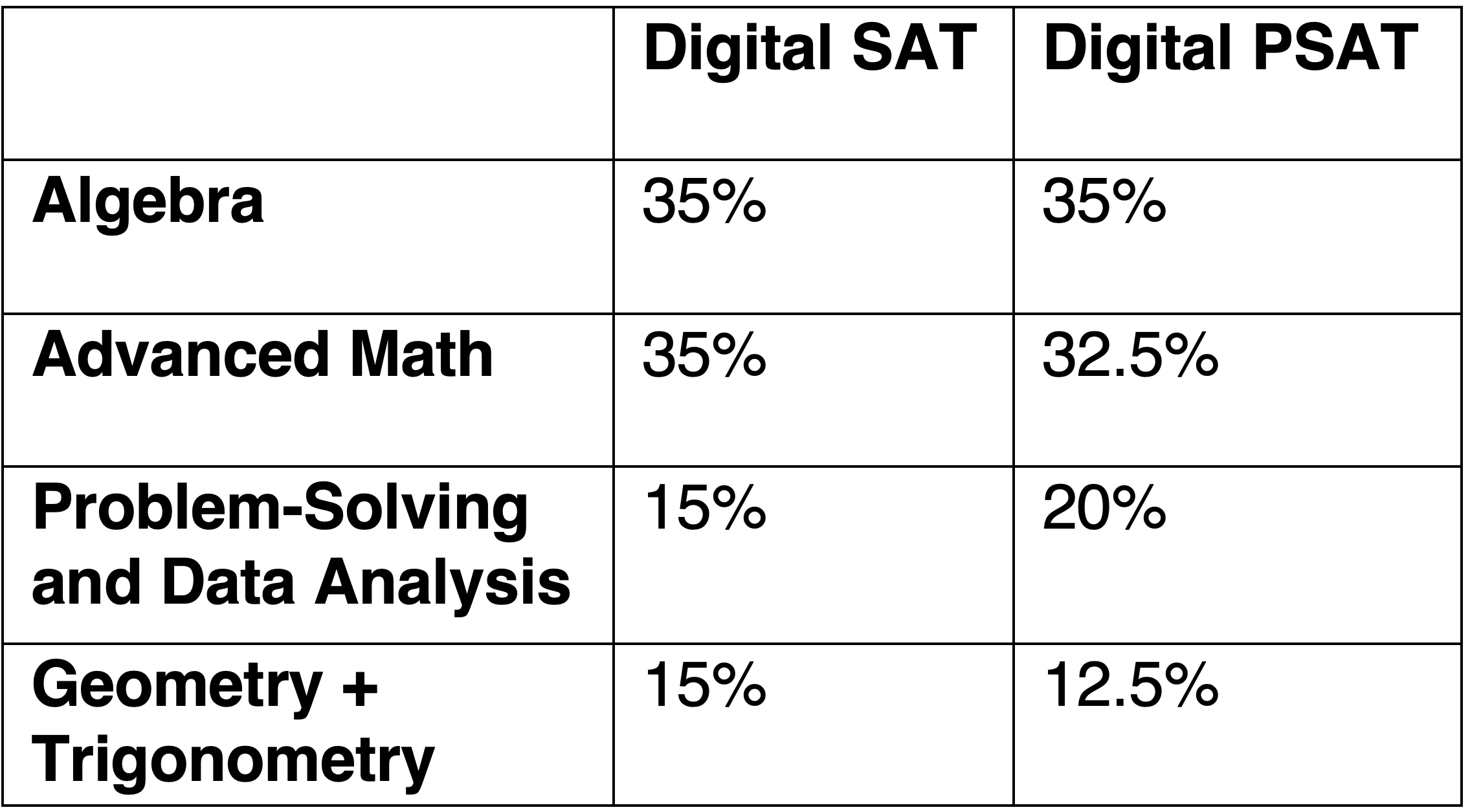Can you believe it’s October? While you’re likely getting in the mood for apple-picking, fall leaves and pumpkin-spiced latte, if you’re in high school, you may also have another October activity on the mind: the PSAT!
And THIS October is different from all the others, because starting October 2023, the PSAT will now be the Digital PSAT!
So what IS it? How is it different from the past version of the PSAT (and from the new Digital SAT)? How do you even practice for it? Fortunately, keeping up with changes to the test prep landscape is part of my job as an expert in the field, and so I’ll be answering all of these questions and MORE in this blog post!
What is the Digital PSAT?
The Digital PSAT is part of a suite of tests created and administered by the College Board: the SAT, the PSAT/NMSQT, and the PSAT 10.
The SAT/Digital SAT is the college admissions test that you’ll need to take to apply to many colleges and universities.
The PSAT 10 is the “preliminary SAT” version that you might get the chance to take during the Spring of your Sophomore year. It’s helpful to dip your toes into the standardized testing waters that you’ll likely need to swim in later. It’s the same format and covers the same material as the PSAT/NMSQT.
And the PSAT/NMSQT? The Preliminary SAT/National Merit Scholarship Qualifying Test (PSAT/NMSQT) is a test administered in the fall of each year, typically to high school juniors. Not only is it helpful to get the hang of the regular SAT and catch a glimpse of how many of those skills you’ve already mastered (or still need to learn!), but the PSAT/NMSQT acts specifically as a qualifying test for entry into the National Merit Scholarship Program.
Do well on the PSAT/NMSQT and you could find yourself named a “National Merit Scholar” later on…which not only gives a nice boost to your college applications, but could even mean scholarship money for you!
And as I mentioned, starting this fall, the PSAT will be digital…so that it truly acts as a “preliminary” experience to the upcoming Digital SAT that will drop in the US in March 2024.
When do I take the new, Digital PSAT?
This year, the Digital PSAT will be administered on weekdays from October 2–October 31, 2023 and on Saturday, October 14, 2023. Your particular high school will choose which date specifically it wants to administer the Digital PSAT during that window (if at all).
When do you find out Digital PSAT Scores?
Your Digital PSAT/NMSQT scores will typically be released online about 4–6 weeks after you take the test.
How is the Digital PSAT administered?
Students will take the Digital PSAT at their school on a computer, laptop or tablet. Specifically, the College Board states that you can use “Mac and Windows devices, iPads, and school-managed Chromebooks” with the Bluebook Testing App installed.
What’s cool about Bluebook Testing App is that students can:
Mark a question for review (so they can go back to it),
Make highlights or notes on any test question, and
Keep time with the built-in timer.
What is tested on the Digital PSAT?
The same Reading, Writing, and Math as before!
READING:
Information and Ideas (i.e. comprehension of main ideas and details, command of evidence, inference, infographics) (~26%)
Craft and Structure (i.e. words and phrases in context, text structure and purpose, making connections between related texts) (~28%)
WRITING:
Standard English Conventions (grammar) (~22%)
Expression of Ideas (rhetorical strategies) (~24%)
MATH:
Algebra (~35%)
Advanced Math (~32.5%)
Problem-Solving and Data Analysis (~20%)
Geometry and Trigonometry (~12.5%)
What does “Computer Adaptive” mean?
The Digital PSAT is “Computer Adaptive,” so the questions you are asked are dependent on how well you performed on previous questions.
Specifically, on the Digital PSAT, each section is split into two equal-length “modules.” The first module is a mix of easy, medium and hard questions to assess your expertise/skill in the subject matter. Depending on how well you perform on that first module, the computer will choose to give you a second module of either easier or harder questions.
What is the format of the Digital PSAT?
The new version of the PSAT breaks down like this:
1. READING AND WRITING SECTION: 54 QUESTIONS IN 64 MINUTES
This section is broken up into two Modules:
Module 1: 27 Questions in 32 Minutes; mix of Easy/Medium/Hard questions
Module 2: 27 Questions in 32 Minutes; adaptive, based on your performance in Module 1
2. MATH SECTION: 44 QUESTIONS IN 70 MINUTES; 33 MULTIPLE-CHOICE + 11 GRID-IN QUESTIONS
This section is also divided into two Modules:
Module 1: 22 Questions in 35 Minutes; mix of Easy/Medium/Hard questions
Module 2: 22 Questions in 35 Minutes; adaptive, based on your performance in Module 1
Total Time: 2 Hours 14 Minutes
How is the Digital PSAT different from the old PSAT?
The Digital SAT is administered on a computer/tablet, not on paper with pencil.
Testing is more secure (i.e. it’s harder to cheat), because students testing at the same time are not given the exact same sections/questions. Instead, they are given comparable test questions that are slightly different and in a different order.
The Digital PSAT is two-stage computer adaptive.
The Digital PSAT is a full half-hour shorter than the paper PSAT: 2 Hours 14 Minutes, vs. 2 Hours 45 Minutes.
There is more time per question on the Digital PSAT than there is on the old PSAT: you have roughly 82 seconds per question vs. 71 seconds per question!
On the Digital PSAT, Reading and Writing are tested together within the same test section, not as separate sections, as they were on the paper PSAT.
There are no long Reading passages! Reading passages (or passage pairs) are 1-2 paragraphs max and are followed by a single question, not by 10-11 questions.
In fact, ALL questions in the Reading and Writing section are “discrete”—in other words, no question has anything to do with any other question. If you don’t understand the text/question of #11, it’ll have no bearing on your ability to understand #12 and answer it correctly.
You can use your calculator on ALL Math questions, because there’s no “No Calculator” section anymore! In fact, there’s a graphing calculator pre-built into the testing app! (You can also bring your own approved calculator if you want.)
The Digital PSAT no longer has separate multiple choice and grid-in portions of the Math sections. Instead, the “Grid-in” (i.e. "self-produced") Math questions are mixed up with the multiple-choice Math questions.
The Math questions are much less wordy than those on the old PSAT!
How is the Digital PSAT different from the Digital SAT?
Scoring: The Digital PSAT has a maximum score of 1520 (760 possible points in Reading and Writing and 760 possible points in Math). The Digital SAT has a maximum score of 1600 (up to 800 points in Reading and Writing and up to 800 points in Math).
Distribution of Math Content: On the Digital PSAT, there are more questions on “Problem Solving and Data Analysis” and fewer questions on “Advanced Math” and “Geometry and Trigonometry” than on the Digital SAT. Specifically, the Math Content is distributed like this:
Fewer Math Skills Tested: There are three skills you will NOT need to know for the Digital PSAT that you do need to know for the Digital SAT.
Margins of Error (part of “Problem-Solving and Data Analysis”)
Evaluating Statistical Claims in experiments and observational studies (part of “Problem-Solving and Data Analysis”)
Circles (part of “Geometry and Trigonometry”)
Anything Else I Should Know Before I take the Digital PSAT this Fall?
There is no guessing penalty! In other words, if you answer a question incorrectly, you don’t get extra points taken off; you just don’t earn the points for that question. Thus, PLEASE select an answer for every question.
Bring a pen or pencil to do scratch work with. It doesn’t need to be a No. 2 pencil, since you’re not actually bubbling in your final answers.
There’s a reference table in the Math section for you to use.
There’s no essay on the Digital PSAT.
Are there practice tests for the Digital PSAT?
Yes, there are currently two official practice tests, and you can find them here:
Currently, the College Board has issued an official Computer-Adaptive Digital PSAT practice test here. You will need to download the Bluebook Testing App to your device before you try it out.
There is also ONE official Full-Length Linear (i.e. NONadaptive) PAPER Digital PSAT practice test.
The latter is helpful in that it offers you more test questions to try out. However, the number of questions and timing are different than they would be on the real thing. (Since the paper practice test is NOT computer adaptive, it can’t determine if you should be given “easier” or “harder” second modules in each section. Thus, it just has to ask you more questions to determine your skill level.)
***
So there you have it! Do you feel ready for the Digital PSAT now? And as always, if you need more personalized help prepping for the PSAT/NMSQT or PSAT 10, consider working with me one-on-one.







